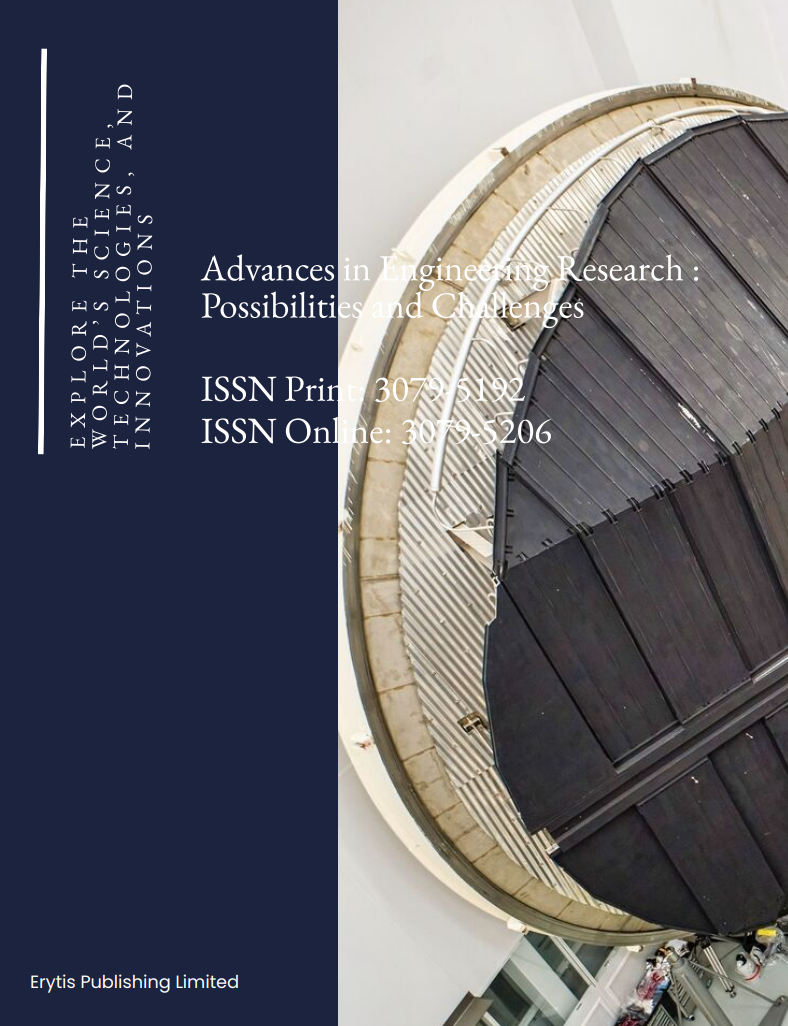From Grid-Following to Grid-Forming: A Review of Converter Technology Paradigm Shift and Its Applications in Renewable-Rich Power Systems
DOI:
https://doi.org/10.63313/AERpc.9047Keywords:
Grid-forming inverter (GFMI), Virtual synchronous generator (VSG), Weak grid stability, Fault, ride-through, StandardizationAbstract
With the global penetration of renewable energy exceeding 30%, power systems are increasingly challenged by inertia deficiency and weak grid stability, exposing the limitations of conventional grid-following inverters (GFLI) which rely on external synchronization and may provoke sub-synchronous oscillations. This review analyzes the technological transition toward grid-forming inverters (GFMI)—capable of autonomously establishing and regulating voltage and frequency—and assesses their application in renewable energy systems. Through bibliometric analysis, case studies from major Chinese renewable bases, and hardware-in-the-loop simulations under weak-grid conditions (SCR as low as 1.0), we identify significant advancements in wide-bandgap semiconductor topologies, adaptive control strategies such as virtual synchronous generator (VSG) and self-synchronizing control (SSC), impedance reshaping, and fault ride-through capability. Real-world implementations demonstrate markedly improved performance: inertia response time reduced to 0.48s, suppression of sub-synchronous oscillations by 89%, reactive response within 25ms, and successful black-start within 180 seconds, alongside notable economic benefits including reduced wind curtailment and lower equipment costs. Nevertheless, widespread adoption faces standardization gaps particularly in thermal management of high-frequency devices, multi-timescale stability certification, and market mechanisms for ancillary services. We conclude that GFMI represents a foundational technology for future high-renewable power systems, though its full deployment requires integrated progress in adaptive intelligence, international standard alignment, and policy-supported market frameworks.
References
[1] Chen, L., Zhu, L., Liu, Y., et al. (2025). Transient synchronization stability analysis of grid-following converters considering coupling between voltage outer loop and phase-locked loop. Automation of Electric Power Systems, 1-15. https://link.cnki.net/urlid/32.1180.TP.20250818.0845.002
[2] Hou, R., & Li, R. (2025). Open-circuit fault diagnosis of wind power converters based on MVMD-cross-correlation time-frequency domain features. Modern Electronics Technique, 48(16), 31–37. https://doi.org/10.16652/j.issn.1004-373x.2025.16.006
[3] Li, G., Zhao, L., Xie, F., et al. (2025). Research on seamless switching control technology between grid-following and grid-forming modes for energy storage converters. Energy Storage Science and Technology, 14(8), 2983–2993. https://doi.org/10.19799/j.cnki.2095-4239.2025.0642
[4] Zhu, B., Wang, Y., Zhang, Z., et al. (2025). Review and prospects of grid-forming energy storage converter technology. Power Capacitors & Reactive Power Compensation, *46*(3), 1–12. https://doi.org/10.14044/j.1674-1757.pcrpc.2025.03.001
[5] Liu, H., Yu, S., Sun, D., et al. (2025). A review of control technologies and principles for grid-forming converters. Proceedings of the CSEE, 45(1), 277–297. https://doi.org/10.13334/j.0258-8013.pcsee.232479
[6] Huang, M., Ling, Y., Geng, H., et al. (2023). A review of multi-unit interaction analysis and stability control for grid-forming converters with power synchronization control. High Voltage Engineering, 49(11), 4571–4583. https://doi.org/10.13336/j.1003-6520.hve.20230748
[7] Yan, H. (2023). Research on control strategies for grid-forming energy storage converters [Master’s thesis, North China University of Technology]. CNKI Theses. https://doi.org/10.26926/d.cnki.gbfgu.2023.000430
[8] Cai, X., Chen, G., Zhou, D., et al. (2019). Status and prospects of offshore wind power con-verter research. Journal of Global Energy Interconnection, 2(2), 102–115. https://doi.org/10.19705/j.cnki.issn2096-5125.2019.02.001
[9] Hu, X., Tang, S., & Li, Z. (2017). Research progress on fault tolerance of MMC converters for HVDC transmission. Electrotechnics Electric, (12), 1–8+32.
Downloads
Published
Issue
Section
License
Copyright (c) 2025 by author(s) and Erytis Publishing Limited.

This work is licensed under a Creative Commons Attribution 4.0 International License.















